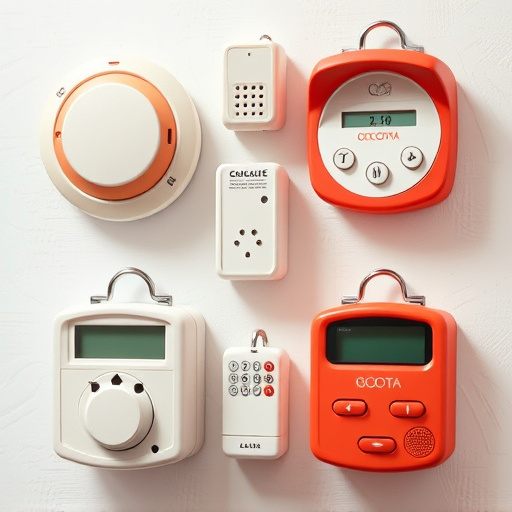Personal Alarms With Remote Control offer discreet yet powerful emergency assistance. They provide loud sirens, remote activation by users or bystanders, and integration with monitoring systems for quicker responses. Choosing the right device requires assessing needs, environment, and features like range, battery life, fall detection. Effective deployment needs strategic risk assessments, training, and responsible data handling to respect privacy rights.
“Personal alarms with remote control have emerged as powerful tools for personal safety, offering peace of mind in today’s diverse environments. This comprehensive guide explores body-worn panic alarms and their transformative impact through remote monitoring systems. We delve into the benefits, from instant emergency response to enhanced security for individuals in various settings.
Learn about selecting the ideal personal alarm device, understanding legal considerations, and implementing effective training routines. Discover how these innovations contribute to a safer world.”
- Understanding Body-Worn Panic Alarms
- Benefits of Remote Monitoring Systems
- Choosing the Right Personal Alarm Device
- Implementation and Training for Effective Use
- Legal Considerations and Privacy Issues
Understanding Body-Worn Panic Alarms
Body-worn panic alarms, also known as personal alarms with remote control, are compact and portable devices designed to provide immediate assistance in case of an emergency. These alarms are typically worn around the wrist or clipped onto clothing, allowing users to discretely carry them wherever they go. The primary function is to emit a loud siren or signal when activated, attracting attention and summoning help.
These personal alarms offer a sense of security by enabling individuals to quickly signal for assistance in various situations, such as during travel, outdoor activities, or in case of personal distress. The remote control feature allows users or bystanders to trigger the alarm from a distance, ensuring swift intervention. This technology is valuable for personal safety, especially for those who frequently find themselves in isolated or unfamiliar environments.
Benefits of Remote Monitoring Systems
The implementation of remote monitoring systems for personal alarms with remote control offers a host of benefits, enhancing safety and peace of mind for individuals in various situations. This technology allows authorized users to track and manage alerts from a distance, ensuring swift response times during emergencies. With real-time updates, it’s possible to navigate challenges more effectively, whether the user is away from home or in a public setting.
Moreover, remote monitoring facilitates proactive safety measures. Caregivers, family members, or security personnel can receive alerts instantly, enabling them to take appropriate action before situations escalate. This feature is especially valuable for individuals with special needs, the elderly, or those in high-risk environments, as it provides an extra layer of protection and support.
Choosing the Right Personal Alarm Device
Choosing the right personal alarm device is crucial for ensuring your safety and peace of mind. When selecting a body-worn panic alarm with monitoring, consider features like range, battery life, and activation methods. Opting for devices with remote control capabilities allows you to activate the alarm from a distance, providing an extra layer of protection in emergencies.
Features such as loud sound levels, automatic fall detection, and integration with emergency services can significantly enhance your safety. It’s important to assess your personal needs and environment—whether you’re alone at home, walking alone, or working in a remote location—to choose a device that offers the best combination of functionality and reliability.
Implementation and Training for Effective Use
Implementing personal alarms with remote control functionality requires a strategic approach and adequate training for optimal effectiveness. When introducing this technology, organizations should start by conducting thorough risk assessments to identify scenarios where such devices can be most beneficial. This involves understanding the potential hazards faced by employees or individuals in specific work environments or situations.
Training sessions should cover not just the technical aspects of using the alarms but also emphasize situational awareness and de-escalation techniques. Employees must learn how and when to activate the personal alarms, ensuring they understand the purpose and limitations of this tool. Role-playing scenarios can be particularly effective in preparing individuals to respond calmly under pressure, thereby enhancing their ability to use these devices responsibly and efficiently.
Legal Considerations and Privacy Issues
The integration of personal alarms with remote control functionality raises several legal and privacy considerations that must be addressed to ensure responsible deployment and use. In many jurisdictions, the right to privacy is a fundamental human right, and laws protect individuals from unauthorized surveillance and data collection. As such, the monitoring of body-worn panic alarms must adhere to strict guidelines regarding consent, data storage, and access.
When implementing remote monitoring systems for personal alarms, organizations should be transparent with users about the scope and extent of surveillance. Obtaining explicit consent from individuals who carry these devices is essential, especially when collecting and storing sensitive personal information. Moreover, clear policies on data protection and secure disposal methods are necessary to safeguard user privacy and maintain legal compliance, particularly regarding Personal Alarms With Remote Control technologies.
Body-worn panic alarms with monitoring systems offer a powerful tool for personal safety, especially in high-risk environments. By integrating remote control capabilities, these devices provide peace of mind and swift response times. Understanding their functionality, benefits, and proper implementation is key to leveraging this technology effectively. When choosing the right device, considering legal aspects and privacy ensures responsible use, making personal alarms with remote control a valuable asset for safety management.
